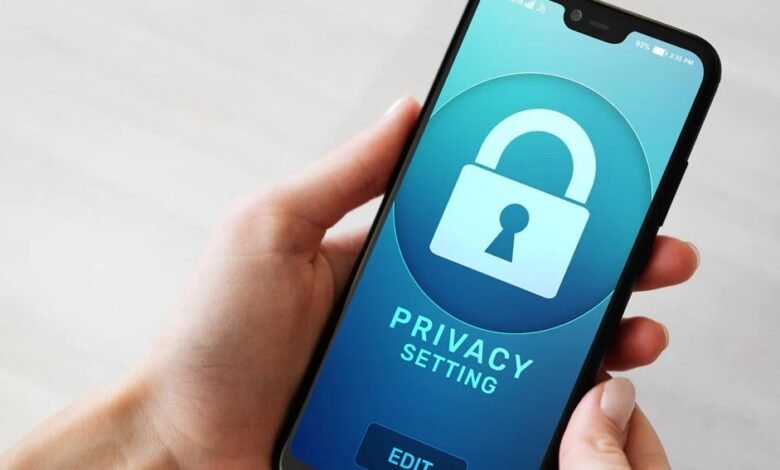Quick privacy upgrade: Turn your phone to safe mode

In the realm of digital security, safeguarding our personal information has become increasingly crucial. One swift and effective method to bolster privacy on your smartphone is by activating the safe mode feature. Safe mode serves as a protective barrier against malicious software and aids in troubleshooting technical glitches, providing users with peace of mind regarding their data security. By delving into the intricacies of safe mode activation and its subsequent benefits, individuals can elevate their privacy measures and navigate the digital landscape with greater confidence.
Activated through a simple sequence of steps, safe mode ensures that only essential system functions are operational on your device, minimizing the risk of unauthorized access and data breaches. As cyber threats continue to evolve and infiltrate various facets of our digital lives, embracing safe mode offers users a proactive defense mechanism, empowering them to mitigate potential risks effectively. By embracing this straightforward yet powerful tool, smartphone users can enjoy heightened privacy protection and a safer digital experience overall.
Quick privacy upgrade
Protection from Malicious Software
One of the primary advantages of using safe mode is its ability to protect your device from malicious software, such as viruses, malware, and spyware. By disabling third-party apps and services, safe mode prevents potentially harmful programs from running in the background, reducing the risk of security breaches and data theft Privacy.
Troubleshooting Technical Issues
In addition to its security benefits, safe mode is an invaluable tool for troubleshooting technical issues on your phone. If you’re experiencing frequent crashes, freezes, or other performance problems, booting your device into safe mode can help you identify and resolve the underlying issues. By isolating the problem to either system software or third-party apps, you can take appropriate action to fix it.
How to Activate Safe Mode on Android Devices
Activating safe mode on your Android device is a straightforward process that can be done in just a few simple steps:
Press and Hold the Power Button
Locate the power button on your device and press and hold it until the power menu appears on your screen.
Long-Press the Power Off Option
Once the power menu appears, you’ll see various options, including “Power Off” or “Restart.” Long-press the “Power Off” option until a prompt appears on your screen asking if you want to reboot into safe mode.
Confirm Reboot into Safe Mode
After long-pressing the “Power Off” option, you’ll see a prompt asking if you want to reboot into safe mode. Tap on “OK” or “Yes” to confirm and proceed with the reboot process.
Wait for Reboot
Your device will then begin the reboot process and boot up into safe mode. This may take a few moments, so be patient and wait for the process to complete.
Confirmation of Safe Mode
Once your device has finished rebooting, you’ll notice that it’s now in safe mode. You may see a “Safe Mode” label displayed somewhere on the screen, indicating that safe mode is active.
Exit Safe Mode
To exit safe mode and return to normal mode, simply restart your device again. Press and hold the power button, then tap on the “Restart” option from the power menu. Your device will reboot and return to its regular operating mode.
How to Activate Safe Mode Privacy on iOS Devices
Activating safe mode on iOS devices, such as iPhones and iPads, is a slightly different process compared to Android devices, but it’s equally simple:
Press and Hold the Side Button
Locate the side button (or power button) on your iOS device and press and hold it until the power off slider appears on the screen.
Release and Hold the Volume Down Button
Once you see the power off slider, release the side button and then press and hold the volume down button until you see the device rebooting.
Keep Holding Until the Lock Screen Appears
Continue holding the volume down button until the device finishes rebooting and you see the lock screen. At this point, your iOS device is now in safe mode.
Confirmation of Safe Mode
You’ll notice that your device is in safe mode as indicated by the absence of certain functionalities and features. While in safe mode, only essential system software is running, and third-party apps are disabled.
Exit Safe Mode
To exit safe mode and return to normal operation, simply restart your iOS device. Press and hold the side button again until the power off slider appears, then swipe the slider to turn off your device. After it powers off completely, press and hold the side button again until you see the Apple logo, indicating that your device is rebooting into normal mode.
Using Safe Mode Effectively
While safe mode offers valuable privacy and security benefits, it’s essential to understand its limitations. In safe mode, you may experience reduced functionality and features, as many third-party apps and services will be disabled. However, this is a small price to pay for the added layer of protection it provides.
Safe mode is particularly useful for identifying and removing malware from your device. If you suspect that your phone has been compromised, booting it into safe mode can help you pinpoint the malicious software and take appropriate action to remove it. Once the malware is eradicated, you can safely reboot your device into normal mode Privacy.
Common Misconceptions About Safe Mode Privacy
Despite its many benefits, safe mode is not a panacea for all privacy and security concerns. It’s essential to recognize its limitations and use it in conjunction with other security measures to safeguard your personal information effectively. Some common misconceptions about safe mode include:
It’s Not a Panacea
While safe mode provides a significant level of protection against malware and other security threats, it’s not foolproof. Sophisticated malware can still find ways to infiltrate your device, even in safe mode. Therefore, it’s essential to complement safe mode with other security practices, such as installing antivirus software and keeping your operating system up to date.
Limitations of Safe Mode
Safe mode is designed to be a diagnostic tool, not a permanent operating mode. While it can help you troubleshoot technical issues and remove malware, it’s not intended for everyday use. Using your device in safe mode for an extended period can be cumbersome and impractical, as many essential features and functionalities will be disabled.
Read More: How to Implement IoT Access Control to Improve Cybersecurity.
Conclusion
Turning your phone to safe mode presents a swift and effective means to bolster your privacy in an increasingly digital world. By activating this feature, users can erect a protective barrier against potential security threats, safeguarding their personal data from malicious software and unauthorized access. Safe mode serves as a proactive defense mechanism, allowing individuals to troubleshoot technical issues and identify potential vulnerabilities within their device’s operating system And his Privacy. While safe mode may entail some limitations in terms of functionality, its benefits far outweigh any temporary inconveniences, offering users invaluable peace of mind regarding their digital privacy.
Ultimately, the decision to turn your phone to safe mode signifies a proactive stance towards enhancing your privacy and security in today’s interconnected landscape. By incorporating safe mode activation into your digital hygiene routine, you equip yourself with a powerful tool to mitigate cyber risks and fortify your device against potential threats. With safe mode at your disposal, you can navigate the digital realm with confidence, knowing that your personal information remains protected and secure. So, don’t hesitate to implement this quick privacy upgrade and take control of your digital safety today.
FAQs
Is safe mode available on all smartphones?
Safe mode is a feature commonly found on Android devices, but its availability may vary depending on the manufacturer and model. Some iOS devices also have a similar feature called “DFU mode.”
Can I still make calls and send messages in safe mode?
Yes, basic phone functionalities such as making calls and sending messages are usually still available in safe mode. However, some third-party apps may be disabled.
Will safe mode delete my data?
No, safe mode does not delete any data from your device. It simply disables third-party apps and services temporarily.
How often should I boot my device into safe mode?
It’s not necessary to boot your device into safe mode regularly unless you suspect that it has been compromised or you’re experiencing technical issues.
Can I access the internet in safe mode?
Yes, you can still access the internet in safe mode using the built-in browser or other pre-installed apps. However, third-party apps that require an internet connection may not function properly.











